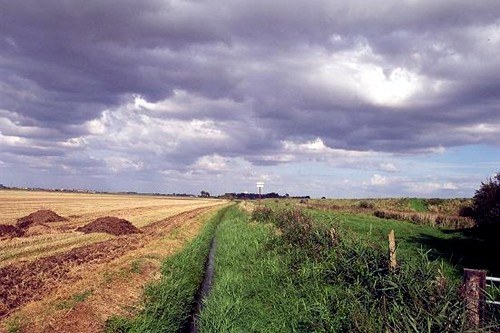| THE MAIN FEATURE of the
countryside around Bourne was the marsh or fenland, huge tracts of swamp
and reed beds, and because the area was low lying it was always damp and
often shrouded in mist, an immense trackless waste of waterlogged land and
sluggish streams. It became a place of mystery and soon tales spread that it was a haunt of devils. But there were people living there, attracted by the fish and the birds that provided a constant supply of food, although they risked illness and disease from the damp atmosphere, and many were outlaws and robbers, rowing or wading from one patch of dry ground to another. In later years, this vast swampy area was to become the fertile farmland we know today, a potential first realised by the Romans who began to embank rivers and cut channels to enable the land to be drained and cultivated and then produce food. The work continued over the centuries and these thousands of acres around Bourne have become some of the most productive in the world. The bread that you toast for breakfast and the chips you eat for lunch most probably came from the wheat and potatoes grown here because that once vast area of bog is now rich in its annual yields of cereal and vegetable crops grown to feed Britainís expanding population.
|
